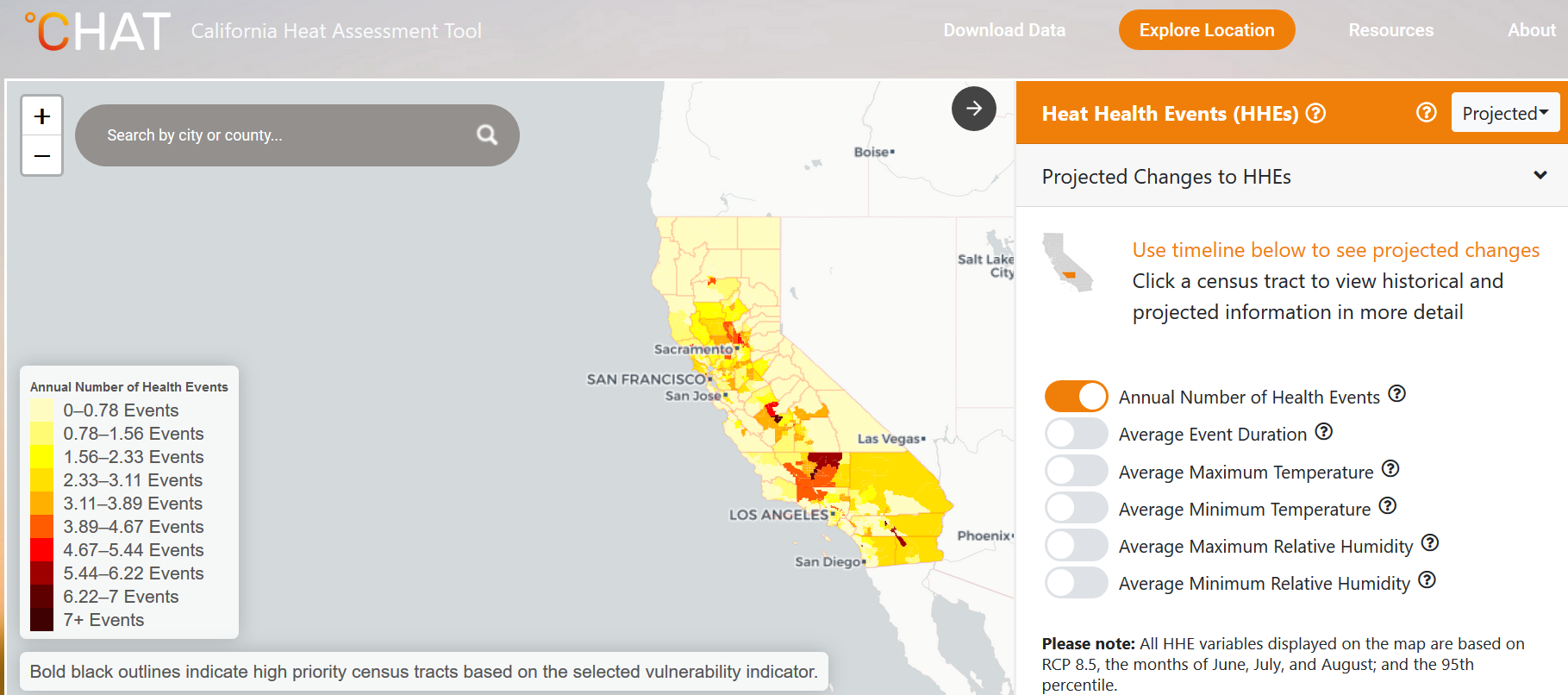
Extreme Heat
As global temperatures increase and periods of extreme heat grow longer and more frequent, extreme heat presents new risk scenarios to the Bay Area. These resources consider future risks in the region under a variety of climate change trajectories for the Bay Area as extreme heat conditions worsen.
Extreme Heat: Risks and Resources
Extreme heat affects both coastal and inland zones of the Bay Area with extreme heat days, heat waves and heat emergencies. Although they do not cause substantial physical damage to the built environment, extreme heat creates a serious public health threat especially to vulnerable populations, including people with disabilities, the elderly and children. A study by the California Energy Commission states that heat waves have claimed more lives in California than all other disaster events combined. Extreme heat emergencies typically build over time with cumulative effects.
The frequency, intensity and duration of extreme heat events and heat waves are expected to rise as a result of climate change, with an increased number of extreme heat days and nights, increased temperatures over extreme days and greater duration of extreme heat events. By the end of the century, most of the region will average six heat waves a year, with the average longest heat wave lasting ten days. Extreme heat events will also extend seasonally into spring and fall.
As Bay Area governments pursue different strategies for mitigation of extreme heat events, we will provide additional planning and mitigation resources.
California Heat Assessment Tool

Explore heat health events (HHEs) in your area through this interactive Cal-Adapt tool, created specifically for local planners, local government and public health practitioners to understand their community’s vulnerability to heat. Users can also explore the relationship of heat to social vulnerability and health indicators, as well as other environmental features. Launch California Heat Assessment Tool.

